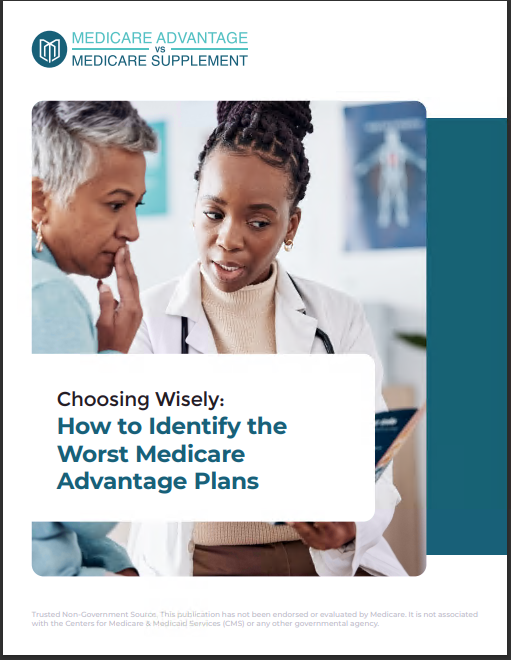Key Takeaways:
-
Medicare costs are more than premiums; understanding deductibles, copayments, and out-of-pocket caps is crucial to finding the right plan for you.
-
The 2025 updates to Medicare—including Part D’s out-of-pocket cap and changes in deductibles—make this year’s choices especially important.
Breaking Down the Basics of Medicare Costs
Navigating Medicare can feel like a maze, especially when it comes to understanding its costs. If you’re trying to select the right plan in 2025, you need to know what you’re paying for and how these costs fit into your healthcare needs. Let’s dive into the core elements: premiums, deductibles, coinsurance, and other expenses.
Medicare Part A: Hospital Coverage
Part A generally covers inpatient hospital care, skilled nursing facilities, and some home health services. If you’ve worked at least 10 years (40 quarters), you’re likely eligible for premium-free Part A. If not, monthly premiums in 2025 are $518 for fewer than 30 quarters or $284 if you’ve worked 30-39 quarters.
But premiums aren’t the whole story. Part A also comes with a deductible of $1,676 per benefit period. After meeting this deductible, you’ll face coinsurance costs:
-
Days 1-60: Fully covered after the deductible.
-
Days 61-90: $419 per day.
-
Lifetime reserve days (91+): $838 per day, with a maximum of 60 days.
Understanding these numbers helps you plan for potential hospital stays and unexpected emergencies.
Medicare Part B: Medical Coverage
Part B covers outpatient care, preventive services, and doctor visits. The standard monthly premium in 2025 is $185. Those with higher incomes may pay an Income-Related Monthly Adjustment Amount (IRMAA), so check your Modified Adjusted Gross Income (MAGI) to estimate your cost.
Part B also includes an annual deductible of $257. After meeting the deductible, you’ll typically pay 20% coinsurance for covered services. Knowing this upfront allows you to budget for routine doctor visits and specialist appointments.
Medicare Part D: Prescription Drug Coverage
A major change in 2025 is the $2,000 cap on out-of-pocket prescription drug costs, a relief for many beneficiaries. The maximum deductible for Part D plans is $590. Once you’ve reached the deductible, your costs depend on the plan’s formulary and tiers.
It’s essential to review Part D plans carefully. While premiums are important, also consider:
-
Whether your medications are covered.
-
Copayment or coinsurance amounts for your drugs.
-
The pharmacy network and its convenience for you.
The Role of Out-of-Pocket Costs in Your Plan Selection
What is MOOP?
For Medicare Advantage (Part C) plans, the maximum out-of-pocket (MOOP) limit is crucial. In 2025, the in-network MOOP is $9,350, and the combined in-network and out-of-network MOOP is $14,000. Once you hit this limit, the plan covers 100% of your healthcare costs.
Although Original Medicare doesn’t have a MOOP, understanding your out-of-pocket liability is still essential. Supplemental plans like Medigap can help fill gaps in Original Medicare.
Balancing Premiums and Out-of-Pocket Costs
Choosing a lower premium plan may seem appealing, but it often comes with higher deductibles or coinsurance. Conversely, plans with higher premiums might save you money if you frequently visit doctors or take expensive medications. Take time to compare your health needs against plan costs.
Timelines and Enrollment Deadlines
Medicare Open Enrollment
Every year, the Medicare Open Enrollment period runs from October 15 to December 7. This is your chance to:
-
Switch between Original Medicare and Medicare Advantage.
-
Change Part D plans.
-
Adjust your current coverage.
Changes take effect on January 1, 2025. If you missed the Open Enrollment window, you might qualify for a Special Enrollment Period (SEP) under specific circumstances, such as moving or losing employer coverage.
Initial Enrollment Period (IEP)
For those turning 65, the Initial Enrollment Period spans seven months—three months before, the month of, and three months after your 65th birthday. Signing up during this period ensures timely coverage and avoids late enrollment penalties.
General Enrollment Period (GEP)
If you didn’t enroll in Medicare during your IEP, the General Enrollment Period runs from January 1 to March 31 annually. Coverage begins July 1, and you may face penalties for late enrollment.
Making the Most of Supplemental Coverage
Medigap Plans
Medigap, or Medicare Supplement Insurance, is designed to cover costs that Original Medicare doesn’t, like copayments, coinsurance, and deductibles. While these plans have an additional premium, they can significantly reduce your out-of-pocket expenses.
Coordination with Other Insurance
If you have employer-sponsored coverage or retiree insurance, it’s important to understand how these benefits coordinate with Medicare. For example, some employer plans require you to enroll in Part B. Knowing these details can prevent gaps in coverage.
Evaluating Your Plan for 2025
Understanding the Annual Notice of Change (ANOC)
Your current Medicare Advantage or Part D plan sends an Annual Notice of Change (ANOC) each September. It outlines updates to premiums, deductibles, copayments, and benefits. Review this document carefully to decide if your plan still meets your needs.
Comparing Plan Options
Use Medicare’s Plan Finder tool to compare available options. Pay attention to costs, coverage, and network restrictions. Don’t just focus on premiums; consider the total cost of care, including:
-
Deductibles
-
Copayments and coinsurance
-
Maximum out-of-pocket limits
Seek Expert Guidance
If Medicare feels overwhelming, don’t hesitate to seek help. State Health Insurance Assistance Programs (SHIPs) offer free, unbiased counseling. These experts can clarify your options and help you make informed decisions.
Common Medicare Pitfalls to Avoid
Ignoring Enrollment Deadlines
Missing enrollment deadlines can lead to coverage gaps and penalties. Late enrollment penalties for Part B and Part D are permanent and can add up over time.
Overlooking Network Restrictions
For Medicare Advantage plans, your choice of doctors and hospitals is often limited to the plan’s network. Make sure your preferred providers are included before committing to a plan.
Underestimating Prescription Costs
Even with the new $2,000 cap on Part D out-of-pocket costs, you should still evaluate your plan’s formulary. Ensure your medications are covered and compare costs across different plans.
Staying Informed About Changes
New Payment Options for Prescription Drugs
In 2025, Medicare introduces a payment plan allowing you to spread out-of-pocket drug costs over the year. This option helps manage expenses and avoid large, upfront payments.
Inflation and Income Adjustments
Medicare costs often change based on inflation and income levels. Stay informed about annual updates to premiums, deductibles, and IRMAA thresholds to budget accordingly.
Choosing a Plan that Works for You
Selecting the right Medicare plan means aligning your healthcare needs with the costs and benefits offered. Ask yourself:
-
How often do I visit doctors or specialists?
-
Do I take regular prescription medications?
-
What is my monthly budget for healthcare?
By answering these questions, you can prioritize what matters most and narrow down your options.
Empower Your 2025 Medicare Choices
Understanding Medicare costs isn’t just about crunching numbers; it’s about gaining peace of mind and confidence in your healthcare decisions. By breaking down the components of Medicare, evaluating your needs, and staying on top of changes, you can pick a plan that offers the coverage and affordability you deserve.









